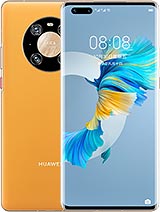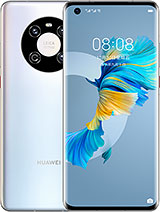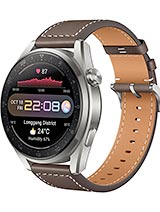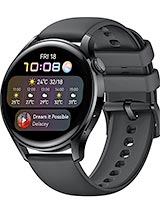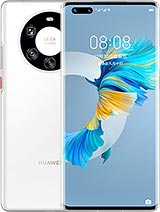Pixel 5 vs. Huawei Mate 40 Pro Camera Comparison: $700 vs $1400! By Android Central
The Huawei Mate 40 pro and the Google Pixel 5. , two of the best smartphone cameras of 2020 at two very different price points and two very different approaches to photography as well with Huawei, it's all about sheer hardware prowess, but on the pixel side, google leans much more on AI and post-processing. So whereas the optics of the pixel camera haven't really changed in almost four years, Huawei is bringing us some of the very best camera components that you'll find in a smartphone. But at the end of the day, what really matters is photo quality. So we're going to take a look at how these two compare directly take a sec to subscribe to android central here on YouTube. So you don't miss future videos, and we'll jump right in so.
First the on-paper comparison, the pixel 5 uses the same Sony, mix 363 sensors as the past three generations of pixel phones, backed up by a 16 megapixel ultra-wide camera. On the Huawei side, we're looking at a significantly larger 50 megapixel ray sensor, using two yellow sub pixels to capture more light. Then you also have the Huawei liner sensor that pulls double duty as your main video sensor, as well as the ultrawide for photography and then arguably, the biggest advantage of the mate 40 pro that five times periscope telephoto, considering the lack of any telephoto on the pixel, that's already a significant win for Huawei. So on to our first comparison in this shot of a cathedral in overcast weather. The most striking thing is how close these two main cameras are in terms of general performance.
Really only two things stand out about this shot. Firstly, the mate 40 pro is able to get a bit more detail out of the clouds up, above so a bit of improved dynamic range there. The pixel also suffers from a bit of color cast down in the bottom section of the shot where the yellow from these flowers bleeds into the surrounding area a little. The pixel also has slightly softer fine detail around the stained-glass windows, as well as this sign on the right side of the frame overall, both good-looking shots, but some minor wins for the mate. Next, we're looking at the ultra-wide cameras with this shot down and alleyway.
We can see here. The field of view is pretty similar in both ultra-wide cameras, but once again, there's a small win for Huawei in terms of dynamic range, with more detail visible in the clouds in the upper portion of the shot. The pixel also has a little more distortion around the edge of very bright areas that you don't see in the Huawei shot, but on the whole, there's not a lot to distinguish these two shots and overall fine detail is pretty comparable. Biggest difference overall might be the white balance with a shot from the mate having a bit more of a greenish tint, not necessarily the most accurate colors. But then the shot from the pixel does appear a bit more washed out.
Next, let's jump to a two-time zoom which in both phones comes in the form of software trickery, though immediately you do see the difference that higher resolution sensor makes. The text on the clock here is more readily visible in the shot from the mate, while everything in the pixel shot is much softer. It's almost impossible to make out the individual letters on the clock face in the pixel photo. Otherwise, it's mostly a question of exposure and white balance. I actually prefer the colors of the pixel photo in this instance, but there's no question that two times the mate captures much more of a detailed shot and that's going to be a trend in pretty much every zoomed shot.
We compare in these two phones take this sequence, which goes from ultra-wide to one time to two times. It's pretty clear. The pixel can't compete at anything beyond two times and even at that two times the mate captures more detail and obviously, when you go to five times, it's just not a fair comparison at all. It's a true five times, telephoto versus hybrid zoom and the pixel loses every time. Another example of that here you can see how much extra fine detail you can see in this stone decoration with that true five times, telephoto on the mate versus the pixel's computational zoom from that 12, megapixel, shooter and again here, there's really just no comparison.
The mate wins every time when you get up towards that five time, zoom level, not totally unexpected but worth pointing out and finally, another zoom comparison with this church clock. The difference is obvious and really just not a fair comparison at this point. But one thing I will say for the pixel, though, is that its white balance is much more consistent than Huawei's. Take this shot of a suspension bridge. It's easy to see how the colors shift towards a bluish hue in the shot from the main sensor of the mate, whereas the pixel captures a much more lifelike color in both of its photos, so the difference in white palettes can definitely be seen in shots from the main camera, for example, in this photo of a storefront where the mate has an almost yellowish greenish tint in this photo compared to the cooler colors of the pixel.
Both shots are perfectly good. Looking and minor. Color differences like this are very easy to fix, but it shows perhaps the different optics of that ray sensor and in this situation I'd say. The pixel's colors are definitely more true to life. Similar comparison here with the mate producing a warmer, more saturated, look that I think, is more pleasing to the eye, though perhaps less realistic.
Once again, we see the mate 40 pro winning in terms of fine detail, but if you look at the labels on the fruit here or the details on some of these bottles, it's clear the pixel shot is softer and doesn't capture quite as much detail as Huawei's camera. One thing worth noting with the mate camera is that ultra-wide shots are captured at a different aspect: ratio, as you can see here, Huawei is ultra-wide, as well-being slightly cooler and more saturated outputs shots at a three by two aspect ratios, but a four by three, so technically you're getting a bit more space with the pixel, but in terms of overall field of view, it's not a huge difference. Low light is a fascinating point of comparison and based on the size of these sensors. You'd expect this to be a very one-sided fight, but actually the pixel really holds its own very well. Here from a distance, I actually prefer the look of the pixel shot, which accurately captures the glow of the lights on these trees.
But once again the devil is very much in the details here. If you look at the stained-glass windows or the sign in the bottom right corner of the shot, it's clear that Huawei's camera is capturing much more fine detail, while also matching the pixel in low light mode. The only real downside for the mate here is that slightly distracting lens flare, let's take a look at another low light shot this time at two times zoom. So in both cases we're dealing with hybrid zoom from the main sensors. Once again, the pixel nails the white balance.
This is a great looking shot in terms of the colors, but it's also clear. The mate just has more detail. Everything is much softer in the pixel shot. If you zoom in even slightly and details off in the distance, are much easier to resolve in pictures from the Huawei phone. Looking at a comparison of the ultra-wide cameras here in night mode again, you'd expect it to be one-sided, because the optics are very much in Huawei's favor, but actually the two shots are pretty close in terms of overall quality.
Both are fairly soft but otherwise really decent. Looking shots so impressive to see google making up the difference in terms of shear software processing, given the pixel's optical disadvantage, it's a similar deal with this indoor shot. The smaller center size of the pixel is evident by the darker photo that it produces. But although the mate captures more light, there's also a good deal more noise, and it's open to debate which shot actually looks better. Once again, google nails the colors, whereas Huawei does have things looking a little warmer in situations with challenging dynamic range like shooting directly into the sun.
Here both phones perform really well a testament to both companies, excellent multi-frame processing, again some minor differences, the Huawei shot has more visible lens flare and more saturated colors, while the Google shot is a bit more muted, but arguably a bit more true to life as well. So main takeaway here is that overall, the mate 40 pro does have a more capable camera setup than the pixel 5. Part of that is just down to optics the high-res sensor and five times. Telephoto means you've got much more wiggle room for zoom shots with the Huawei camera. The pixel strengths, on the other hand, come in the form of its color science.
I generally prefer the look of shots from Google's cameras, and they are more consistent as you change through the two lenses with a mate 40, there's a bit less consistency there. Maybe this conclusion seems inevitable when you're comparing a 700 phone to a 1400 phone but for its price, the pixel really does hold its own remarkably well against these much more expensive phones. If anything, this just underscores how much the competition has caught up with Google's cameras late and that with the pixel 6, we'll be hoping for some more concrete improvements in the actual optics of those cameras. The biggest weakness for Google is telephoto zoom, where the pixel really is quite poor, compared to not just the mate but most flagship phones in general, and while you do have to take into account the price difference when you're, comparing these two, it's pretty clear. The pixels move to a lower price point this year has resulted in google, basically ceding the top spot in smartphone photography to rivals like Samsung, Huawei and apple anyway.
That's going to do it for this comparison. Let us know what you think of these two cameras down in the comments and subscribe. So you don't miss future videos. Thanks for watching, and I'll see you next time, you.
Source : Android Central

